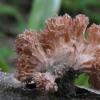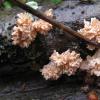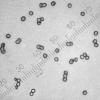
07-12-2025 16:07
Arnold BüschlenHallo, ich habe in einer Moos-Aufsammlung (epiphy

08-12-2025 21:04
Mark Stevens"Hello everyone,I'm relatively new to microscopy (

09-12-2025 12:06
 Andgelo Mombert
Andgelo Mombert
Bonjour,Je recherche l'article concernant Hypobryo

08-12-2025 18:59
 Lothar Krieglsteiner
Lothar Krieglsteiner
.. found by a seminar-participant, I do not know t

08-12-2025 17:37
 Lothar Krieglsteiner
Lothar Krieglsteiner
20.6.25, on branch of Abies infected and thickened

16-03-2014 22:00
Hello,I found this species a few months ago but ha

08-12-2025 13:39
Thomas Læssøehttps://svampe.databasen.org/observations/10572899
On hornbeam in the Caucasus (Georgia)
Alex Akulov,
30-05-2010 20:40
 Dear friends
Dear friendsToday my colleagues from Russia have sent photos of a mysterious fungus found on the branches of hornbeam in the Caucasus. Photos put me in a deadlock state. My first thought was that it was representative of the Basidiomycota (Ramaria, Clavulina…), but spores are pushing the idea that it is representative of the Anamorphic Ascomycota (Clavicepitales, Xylariales, ???).
Please tell your assumptions, whatever it might be.
Thank you before,
Alex.
Jacky Launoy,
30-05-2010 21:03
Re:On hornbeam in the Caucasus (Georgia)
It seems to be Paecilomyces farinosus (Holm ex Gray) Brown & Smith
Christian Lechat,
30-05-2010 21:08

Re:On hornbeam in the Caucasus (Georgia)
Hi, Alex,
I think that is an asexual state of Xylaria
Christian
I think that is an asexual state of Xylaria
Christian
Renée Lebeuf,
30-05-2010 22:06
Re:On hornbeam in the Caucasus (Georgia)
This looks to me like Xylocoremium flabelliforme (Schw.: Fr.) J.D. Rogers. The description I have says it is the asexual reproductive stage of Xylaria cubensis. It was found last year in Quebec.
Renée Lebeuf
Renée Lebeuf
Jacques Fournier,
30-05-2010 22:11

Re:On hornbeam in the Caucasus (Georgia)
Hi Alex,
indeed it looks like a Xylocoremium state of a Xylaria of the X. cubensis group. Typically, the conidiophores are arranged in tight palisades anf yield ellipsoid conidia 4-6 x 2-3 µm, unlike the globose conidia on the photo. You should make a squash mount of a piece of a branch in a drop of KOH to see the conidiophores.
Tell your colleagues to keep an eye on branches in the collection site, the teleomorph occurs separately from the anamorph, some weeks later.
Otherwise I have no idea.
Cheers,
Jacques
indeed it looks like a Xylocoremium state of a Xylaria of the X. cubensis group. Typically, the conidiophores are arranged in tight palisades anf yield ellipsoid conidia 4-6 x 2-3 µm, unlike the globose conidia on the photo. You should make a squash mount of a piece of a branch in a drop of KOH to see the conidiophores.
Tell your colleagues to keep an eye on branches in the collection site, the teleomorph occurs separately from the anamorph, some weeks later.
Otherwise I have no idea.
Cheers,
Jacques
Alex Akulov,
30-05-2010 22:37

Re:On hornbeam in the Caucasus (Georgia)
Thank you all for your help!
Alex
Alex




